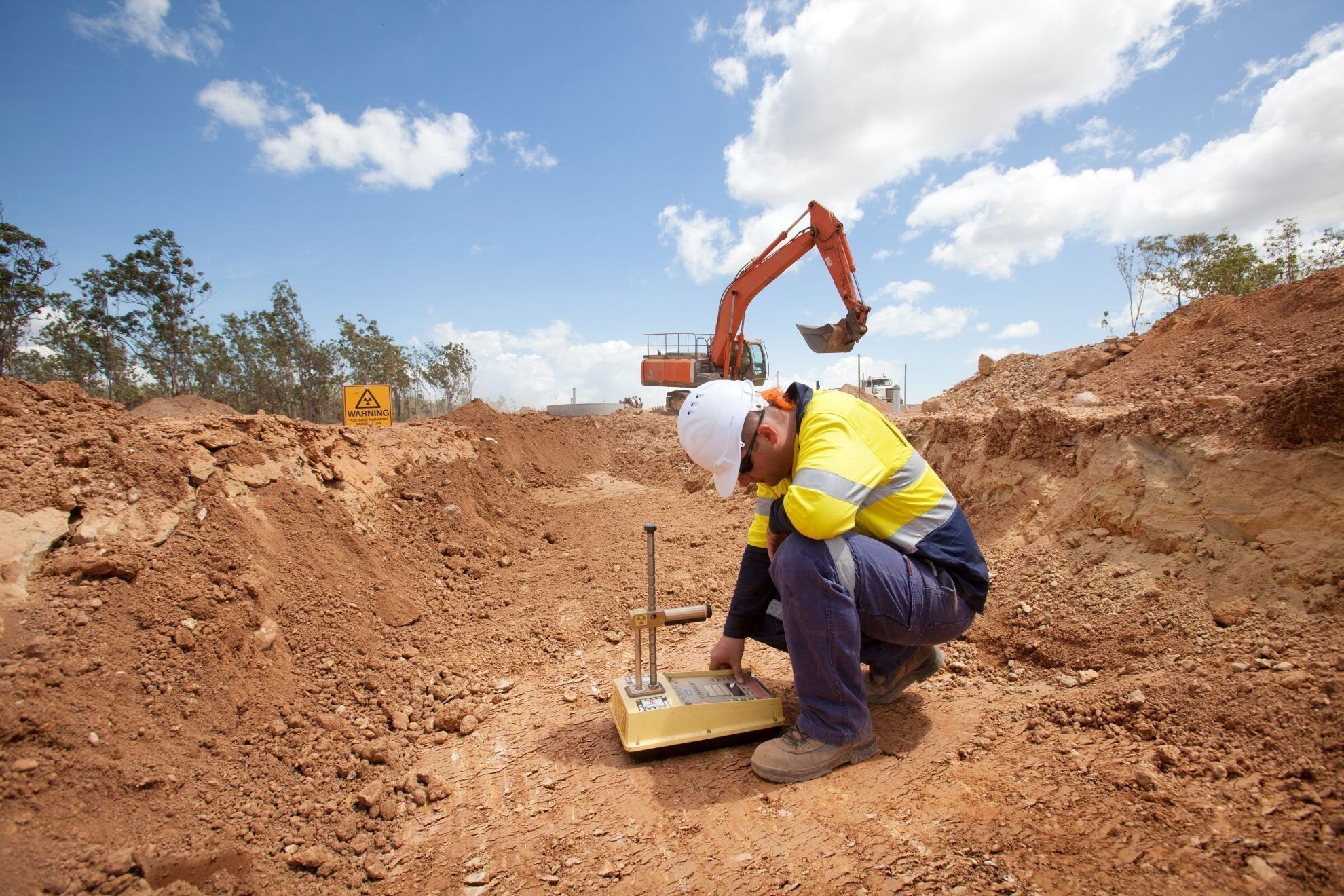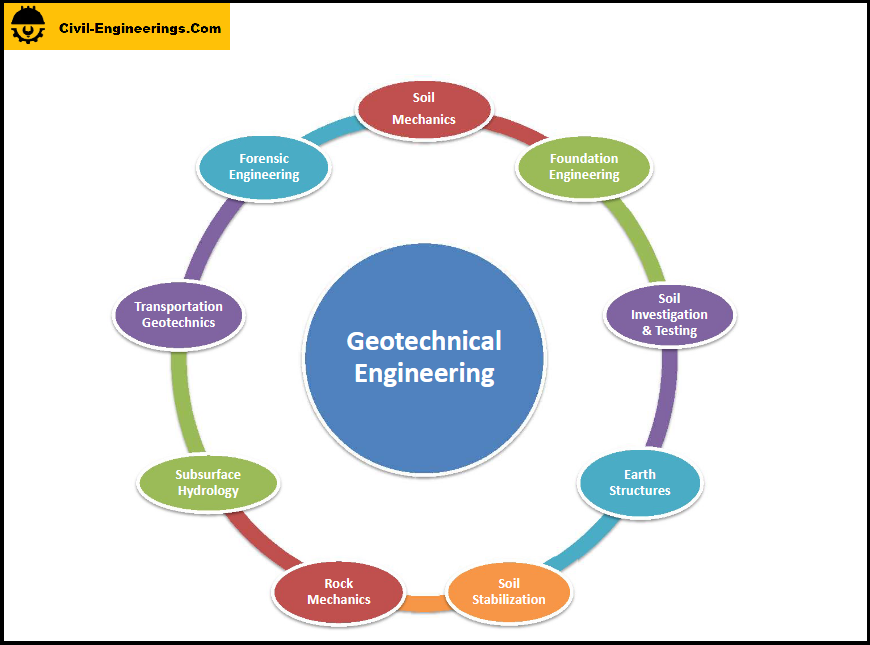Some Known Details About Geotechnical Engineering For Construction Projects
Some Known Details About Geotechnical Engineering For Construction Projects
Blog Article
See This Report about Geotechnical Engineering For Construction Projects
Table of ContentsWhat Does Geotechnical Engineering For Construction Projects Mean?Little Known Facts About Geotechnical Engineering For Construction Projects.Little Known Questions About Geotechnical Engineering For Construction Projects.The Buzz on Geotechnical Engineering For Construction ProjectsGeotechnical Engineering For Construction Projects Fundamentals Explained
Throughout the examination, it is crucial to pierce at the called for deepness and the needed number of openings as per the recommendation of the Canadian Structure Design standard. Often, the proprietor could save some Geotechnical Examination expense however wind up investing greater than the anticipated during the building cost.The obligations of the geotechnical expert include offering product screening for building support. Geotechnical Engineering for Construction Projects. Geotechnical engineers analyse all the field examination records to make certain that building and construction is taking place according to the job specification. During construction, a confirmatory examination for dirt compaction is done on-site to guarantee that no future negotiation happens
After the concrete is put -7 days and 28 days- tests are performed on concrete examples collected from the site to make sure that the concrete poured meets the design requirement. Asphalt core is taken after the Asphalt is laid and compacted to confirm that it fulfills the design requirement. All research laboratory examination records are evaluated by the Geotechnical Engineer to make sure that it satisfies the project spec.
An Unbiased View of Geotechnical Engineering For Construction Projects

Geotechnical design plays an important role in making certain the stability of construction projects. Geotechnical engineering is an essential branch of civil design that concentrates on recognizing the behavior of planet products, such as soil and rock.

For a reliable foundation and a smooth construction process, trust fund to supply the know-how you require. Call to obtain professional recommendations and geotechnical solutions customized to your following job.
Geotechnical Engineering For Construction Projects Things To Know Before You Get This
When beginning on a land development task, recognizing the ground under your feet is as important as the structures you intend to construct above it. Our Geotechnical Design group evaluate the ground, ensuring it appropriates for the recommended advancement while offering you with the details required to meet your task goals.
Geotechnical Design looks at the development of the ground, as it is the foundation for all tasks. Where structures need to be made with regard to the ground conditions; ground problems (e.g., soft ground) might need reinforcing depending on the size of the intended framework. Prior to building, you require to find out about the groundwater, dirt structure, and liquefaction likelihood of your land.
For sites that are not attached on the local authority framework added website investigations would be needed to give technological inputs for on-site stormwater and wastewater. We have experienced address Geotechnical Engineers based in each office, sustaining your geotechnical requirements nationwide. Reach out to us to talk about just how we can support your following job.
These records are customized to satisfy the specific requirements of a task and consist of design parameters and recommendations for the construction of a series of synthetic frameworks. Along with giving consultancy solutions covering areas such as incline security and load-bearing capabilities for various products, these designers undertake r & d tasks to improve methodologies, tools, products expertise and analysis covering entire lifecycles.
Geotechnical Engineering For Construction Projects for Dummies

Prices of pay typically boost as your knowledge and abilities grow, with guidelines directing to a graduate beginning wage of between 18,000 and 28,000 per year discover this in the UK. This increases to 26,000 to 36,000 with a few years of experience and then getting to 40,000 to 60,000+ for elderly, chartered or master engineers.
Nonetheless, with the ideal application it is possible to master the occupation and gain entrance to a tough yet fulfilling and important job. A rock hound would certainly need to re-train to come to be a geotechnical designer, although there is a lot of cross-over in between the 2 occupations, which could make this much easier - Geotechnical Engineering for Construction Projects. Geologists require to have an understanding of soils, rocks and other materials from a clinical perspective, while geotechnical engineers tale their understanding of matters such as soil and rock auto mechanic, geophysics and hydrology and use them to design and environmental tasks
When starting, these designers will certainly have a tendency to service less complex jobs, developing knowledge and experience ready for more difficult job later. Geotechnical engineers often tend to be experts in particular areas as they expand in experience, concentrating on specific facilities such as trains, roadways or water. These designers likewise collaborate with renewable power, offshore and onshore oil and gas, nuclear power, and more.
The Ultimate Guide To Geotechnical Engineering For Construction Projects
The time taken to become a geotechnical engineer depends on where you are based, where you research study and what degree of education you want to obtain prior to entering the work environment. Generally-speaking it takes 3-4 years to reach the basic demands to begin an occupation as a geotechnical engineer.
These operations allow specialists to analyze a host of dirt mechanics including weight, porosity, void-to-solid bit ratio, leaks in the structure, compressibility, maximum shear toughness, bearing capability and contortions. If the look at more info framework requires a deep structure, designers will certainly use a cone infiltration examination to approximate the amount of skin and end bearing resistance in the subsurface.
When examining an incline's equilibrium of shear stress and anxiety and shear stamina, or its ability to withstand and undergo motion, rotational slides and translational slides are frequently thought about. Rotational slides fail along a curved surface, with translational slides occurring on a planar surface. A specialist's goal is to figure out the conditions at which a slope failure can occur.
Often, searchings for recommend that a website's dirt must be treated to improve its shear stamina, stiffness and permeability prior to style and building and construction. When it comes time to outline structure strategies, experts are significantly concentrated on sustainability, more particularly just how to reduce a structure's carbon footprint. One strategy has actually been to change 20 percent of a foundation's concrete with fly ash, a waste product from coal fire nuclear power plant.
Report this page